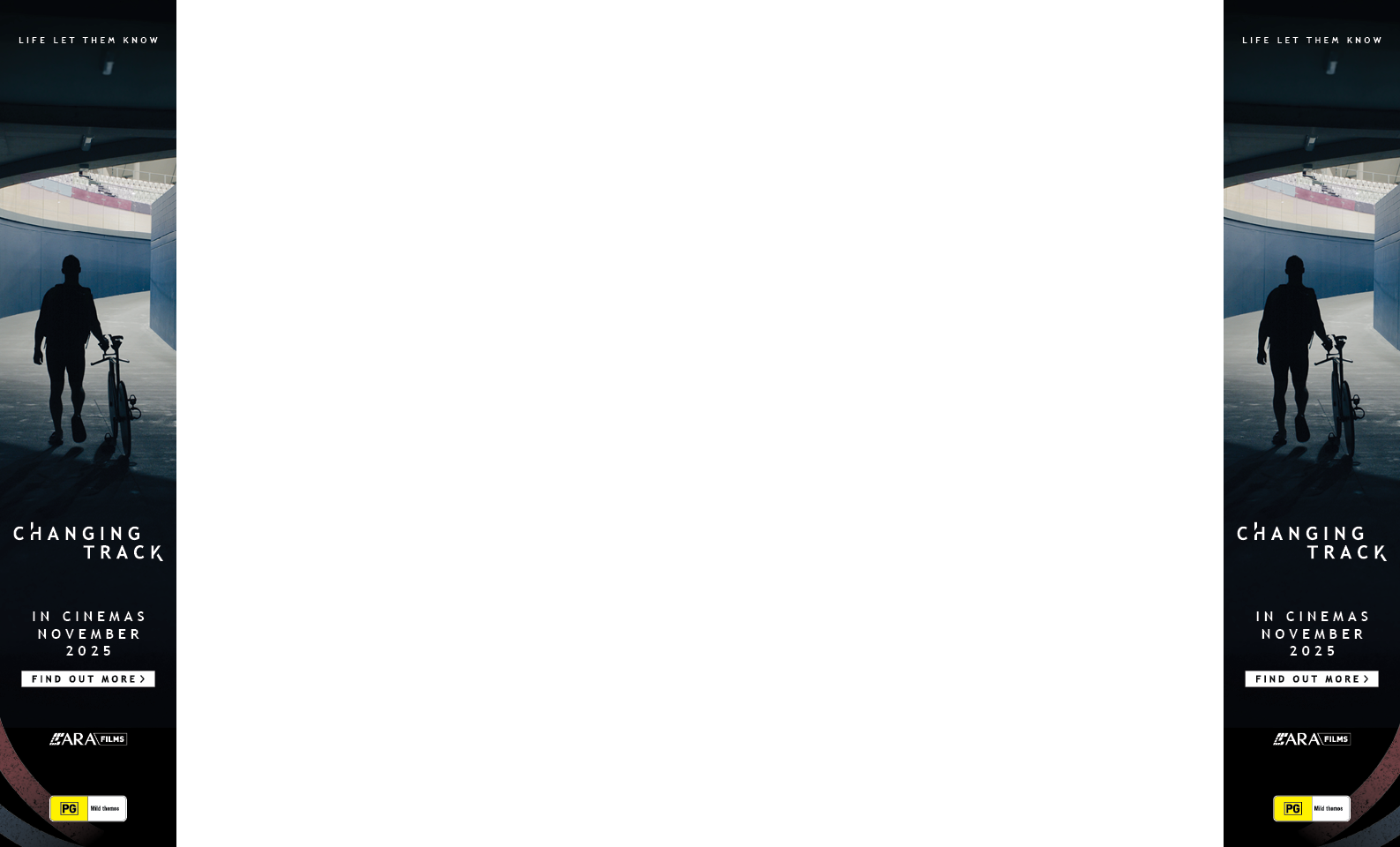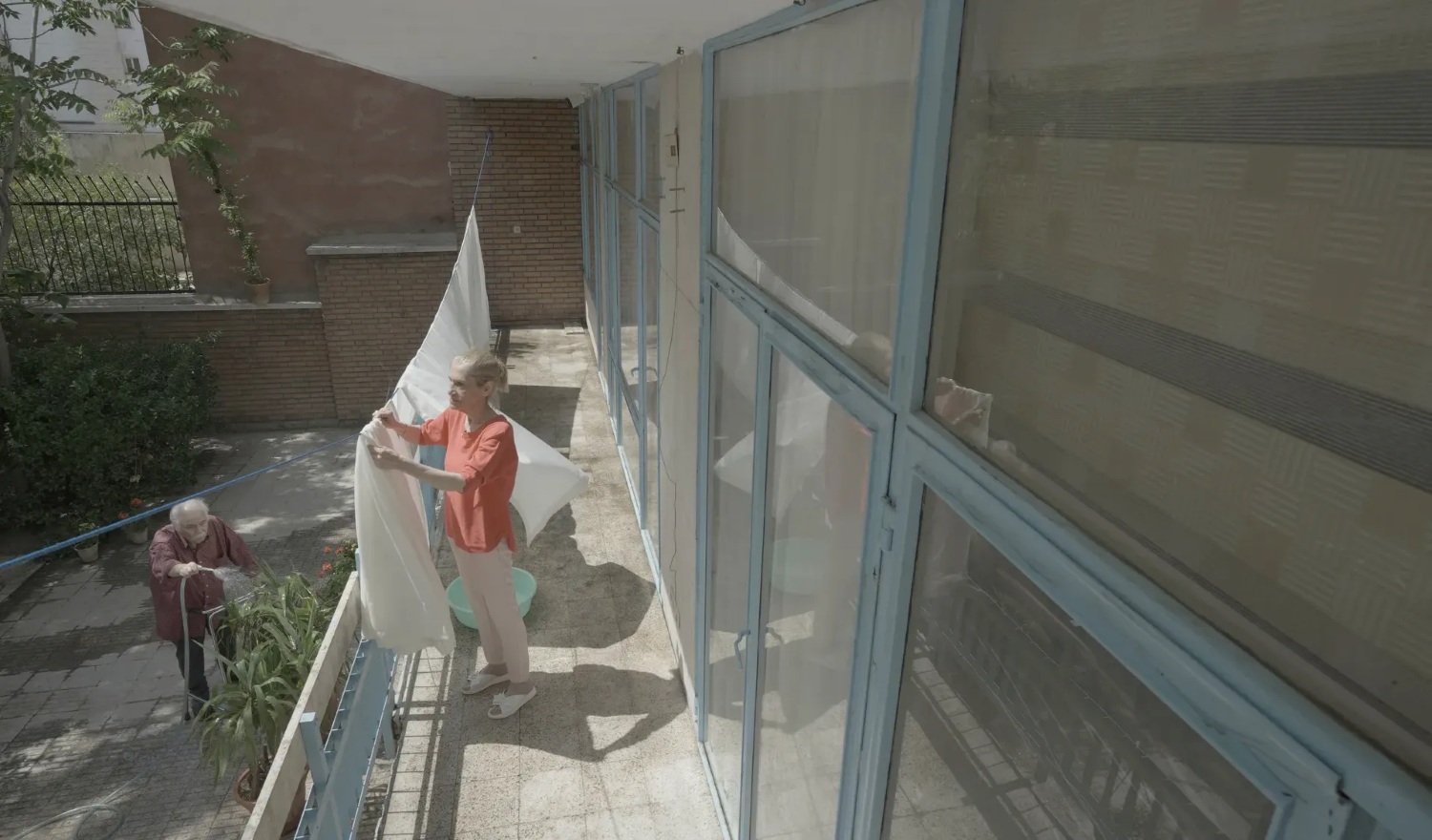by Nataliia Serebriakova
Worth: $17.00
FilmInk rates movies out of $20 — the score indicates the amount we believe a ticket to the movie to be worth
IDFA
Intro:
... deeply human storytelling.
Many years ago, Maryam emigrated from Iran to the United States. Her parents stayed behind in Tehran, in their warm and spacious family home. Missing them deeply, Maryam persuaded her parents to install video cameras in almost every room, as well as one in the yard and another outside. The film Past Future Continuous by Morteza Ahmadvand and Firouzeh Khosrovani begins with footage from these cameras as technicians set them up. Then, Maryam’s mother and father are left alone in the house that they continue to care for so diligently despite their age. Her father can move only with a walker, yet he still makes his own coffee in the kitchen. Her mother hangs curtains or watches television. Sometimes, the two of them even dance in front of the camera, deliberately performing for Maryam. And when their daughter sends them a birdcage with a parrot, they name the bird Maryam and teach it to speak.
This Iranian film, which premiered at Venice and now shown at IDFA, explores how one can preserve the memory of home from afar. But it is also about how parents inevitably grow old and how the foundations of what once felt familiar begin to crumble. The directors link Maryam’s nostalgia for the home she can no longer return to — presumably because of her activist work (though this is never stated outright) — with the cycles of war that periodically erupt in the country. Maryam’s childhood friend, the boy she swims with in grainy archival footage, was killed in the war, and the street where her parents’ house stands now bears his name. Her parents themselves die before their daughter’s eyes — live, on camera. The house that her father, an architect, lovingly built in the late 1970s slowly empties, decays, and turns into ruins. The video recordings bear witness.
There is no dialogue in the film — only Maryam’s voice and the imagined voice of the house speaking back to her, saying that it is always waiting for her return.
Many works in documentary cinema are devoted to the theme of memory — from the classics of Jonas Mekas and Chantal Akerman to lesser-known films by younger directors. But this Iranian filmmaking duo has managed to capture the realisation of a simple, universal longing shared by every migrant: to see how your home lives on without you. Together, multimedia artist Morteza Ahmadvand — known for his painterly, installation-based explorations of identity and memory — and acclaimed documentarian Firouzeh Khosrovani — whose award-winning work blends personal history with sharp social insight — form a filmmaking team uniquely skilled at merging visual art with intimate, deeply human storytelling.
Ultimately, the film becomes a quiet elegy for the things we lose when we leave home — not just people and places, but time itself. Through its intimate surveillance images and Maryam’s introspective narration, it reveals how distance reshapes love, and how memory becomes both refuge and burden.
By the end, what remains is a profoundly human truth: even when home slips beyond reach, its echoes endure, living on in the rooms we remember, the voices we carry, and the longing that never fully fades.




